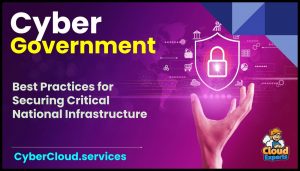 Governments all over the world face a steep challenge, securing critical national infrastructure in an era of hyper-scale levels of cybersecurity threat.
Governments all over the world face a steep challenge, securing critical national infrastructure in an era of hyper-scale levels of cybersecurity threat.
In today’s digital age, governments around the world face numerous cybersecurity risks that threaten the confidentiality, integrity, and availability of their sensitive data and critical infrastructure.
As governments handle vast amounts of sensitive information and provide essential services to their citizens, they become attractive targets for cybercriminals, hacktivists, and even nation-state actors.
Cyber Government Risks
Governments face a wide range of cybersecurity risks that are unique to their operations and the sensitive nature of the data they handle. Some of the key risks include:
- Advanced Persistent Threats (APTs) – APTs are sophisticated cyberattacks typically orchestrated by nation-state actors with the objective of gaining unauthorized access to government networks and stealing sensitive information. Governments must be vigilant against APTs as they can lead to significant data breaches and compromise national security.
- Insider Threats – Insider threats pose a significant risk to government cybersecurity. These threats can come from disgruntled employees, contractors, or individuals with authorized access to government systems. Governments must implement strict access controls, conduct regular security awareness training, and monitor user activities to detect and prevent insider threats.
- Supply Chain Attacks – Supply chain attacks involve compromising the software or hardware supply chain to gain unauthorized access to government systems. These attacks can be challenging to detect and mitigate, as they exploit vulnerabilities in trusted vendors’ products or services. Governments should establish robust supply chain security practices, including thorough vendor vetting and continuous monitoring of the supply chain.
- Nation-State Attacks – Governments are prime targets for nation-state attacks, where foreign governments attempt to disrupt critical infrastructure, steal sensitive information, or manipulate public opinion. Defending against nation-state attacks requires a comprehensive cybersecurity strategy, including threat intelligence sharing, strong incident response capabilities, and collaboration with international partners.
Best Practices for Government Cybersecurity
To effectively mitigate the unique cybersecurity risks faced by governments, the following best practices should be implemented:
1. Develop a Comprehensive Cybersecurity Strategy
A well-defined cybersecurity strategy is crucial for governments to protect their sensitive data and critical infrastructure. This strategy should include risk assessments, incident response plans, security awareness training, and regular audits to ensure compliance with security standards.
2. Implement Multi-Factor Authentication (MFA)
MFA adds an extra layer of security by requiring users to provide multiple forms of identification to access government systems. This helps prevent unauthorized access, especially in the case of compromised credentials.
3. Encrypt Sensitive Data
Encryption is essential to protect sensitive government data, both at rest and in transit. Governments should implement strong encryption algorithms and ensure that encryption keys are properly managed to prevent unauthorized access.
4. Regularly Update and Patch Systems
Keeping software and systems up to date with the latest security patches is crucial to protect against known vulnerabilities. Governments should establish a robust patch management process to ensure timely updates and minimize the risk of exploitation.
5. Conduct Regular Security Assessments
Regular security assessments, including penetration testing and vulnerability scanning, help identify weaknesses in government systems and networks. By proactively identifying and addressing vulnerabilities, governments can strengthen their overall cybersecurity posture.
6. Foster Public-Private Partnerships
Collaboration between government agencies and private sector organizations is essential to combat cybersecurity threats effectively. Governments should establish partnerships with industry experts, share threat intelligence, and collaborate on incident response to enhance their cybersecurity capabilities.
Conclusion
Governments face unique cybersecurity risks due to the sensitive nature of their data and critical infrastructure. By understanding these risks and implementing best practices, governments can enhance their cybersecurity posture and protect their citizens’ information and national security. It is crucial for governments to stay vigilant, adapt to evolving threats, and foster collaboration to effectively defend against cyber threats in the digital age.



